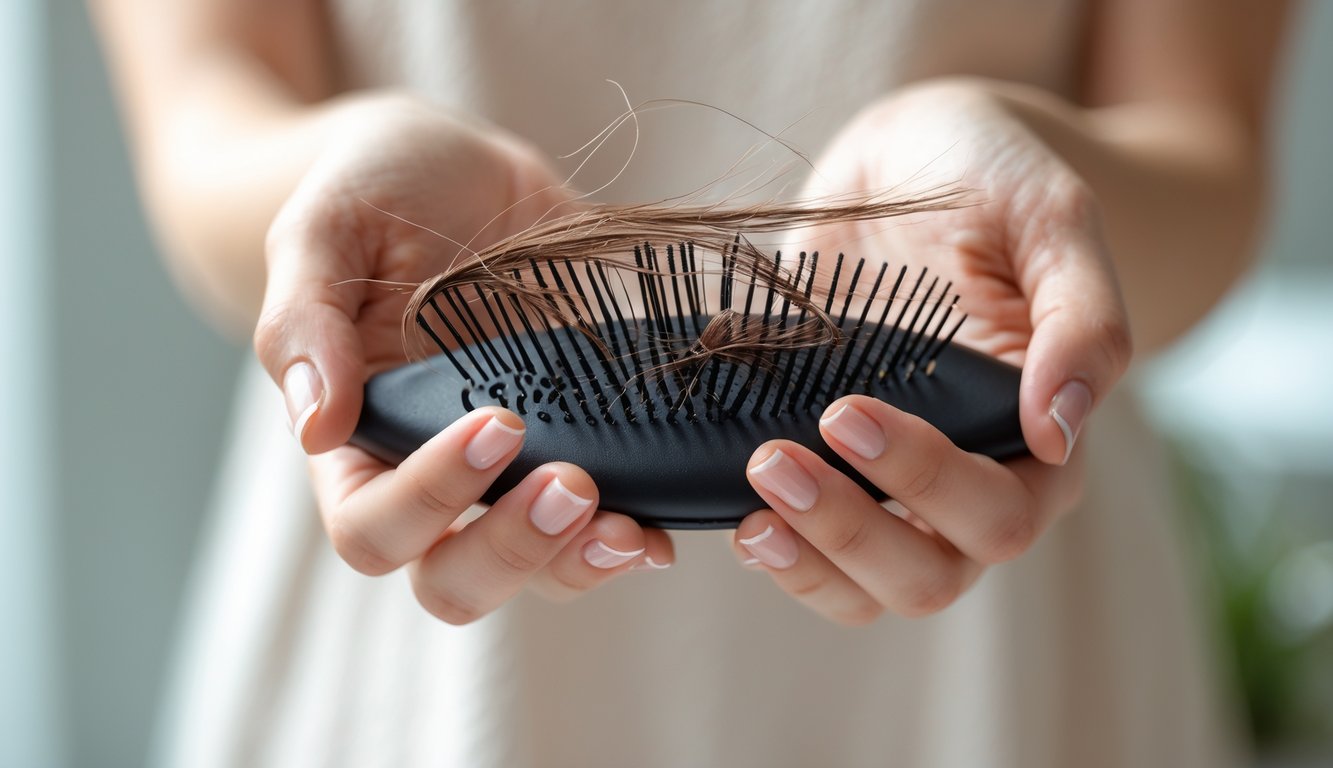
So, I wrap my hair in that giant cotton bath towel—like, is this just me?—and every single time, those little hairs at my hairline just snap off. Feels like I’ve bleached for years, even though I haven’t. Turns out, those fluffy towels we all hoard? They basically shred fragile hair, and it’s maddening because I do all the serums and deep conditioners and still, surprise breakage. Towel turbans, those heavy, cozy monsters I cling to after every shower, are basically traitors. My stylist rolls her eyes at me every time I mention it (she’s got a point, I guess). There’s research on this, actual trichologists at laurakcollins.com going on about it—so why am I still tangled up in these habits?
Yesterday, in a half-awake fog, I tried swapping my ancient terry towel for this microfiber thing TikTok bullied me into buying. Felt wrong, like towel infidelity. Did my hair have a spiritual awakening? Nope. Less fuzz, and, okay, maybe fewer snapping sounds. I get the heat protectant thing—blow dryers and flat irons are obvious villains—but a towel? That’s just sneaky. And don’t get me started on cotton pillowcases. Why don’t salons just toss in a silk one with your overpriced blowout? Maybe I’ll try air-drying outside next, but then—sun exposure, and my dermatologist’s already on my case about UVA rays frying my scalp.
What bugs me: why does breakage always hit right where I put my half-up ponytail, but my poor ends—always under attack by the flat iron—seem fine? Am I missing something embarrassingly basic, or is this just years of towel-twisting muscle memory? Crownandstep.com says hydration and cutting sneaky friction matter more than any overpriced mask. I mean, swapping towels won’t fix humidity or my habit of yanking ponytails too tight, but honestly, if you’re sick of mysterious thinning, maybe your laundry pile is the real enemy.
What Is Unexpected Hair Breakage?
I keep running my hands through my hair and—why does it feel thinner in weird spots, but only when I’m not thinking about it? Damage just kind of sneaks up. My dermatologist once hit me with a “miracle oil isn’t a miracle” reality check. She said, if your hair just snaps, pay attention—ignoring it only means more split ends and random shedding that never shows up when you want proof at the salon.
Understanding Hair Breakage
What drives me up the wall: breakage is stealthy. Not dramatic, not even that visible unless you’re staring for it. Just tiny hairs, gone. One day you trust your old elastic, next day, frizz halo. I read this Cloud Nine Australia explainer and it’s not just products—sleeping in a bun, towel-drying, the brush you use, even what you eat. For me, it’s always after some rushed heat styling marathon. Nobody talks about skipping meals and suddenly your hair’s frail, but I see it. Even brushing too much? The cuticle can’t take it (Healthline says so: summary). It’s never just one thing.
Recognizing Signs of Hair Breakage
Visually? Why do those short, rough pieces only stick up on humid days? My stylist says “flyaways” is just code for breakage, not static. There’s frizz, split ends, jagged lengths, and tiny bits left on the bathroom sink after a quick comb (trichologist Kimberly Vaughn via First For Women says that’s breakage, not shedding). Here’s what I always ignore: my pillow is covered in those little uneven hairs. No one’s tracking that in glossy magazines, but it’s real. My friend swears her best hair day came from not touching her hair for 24 hours. Imagine that. I can’t.
Split Ends vs Hair Loss
Honestly, I mix up split ends and hair loss every week. Split ends are when a strand frays, usually after I skip trims or go wild with a flat iron. Hair loss is fallout from the root, which sends me into panic mode every time I check the drain, but it’s not the same as the stuff at the ends. Dermatologist Corey L. Hartman says you’ll spot damage, not loss, if you see random short hairs near the middle or ends (Allure covers this). And of course, there’s always someone insisting their “broken hair” is just regrowth. Makes no sense. Last month, my split ends flared up after a heat-styling binge, but actual loss (stress shedding) hit during finals week. Neither matched the promises on those hair vitamin bottles, by the way.
Common Causes of Hair Breakage
Ever find yourself yanking at split ends, staring at your comb like it’s going to solve your problems? Suddenly, those smooth strands are just… not. And the wild part? It’s usually stuff you never even think about that’s doing the most damage. Everyday routines, chipping away at your hair, and you don’t even notice.
Heat Styling Tools and Heat Damage
Flat irons, curling wands, blow dryers—please. My friend’s bathroom? Three heat tools plugged into one power strip, cords everywhere. People crank the temp to max and hope for the best. Over 365°F (185°C) literally melts keratin bonds, says trichologist Anabel Kingsley, but who’s reading the fine print on those dials? My sister’s stylist pushes ceramic plates and heat protectant sprays, which might work if anyone actually remembered to use them. But split ends still pile up.
Heat styling isn’t a luxury, it’s just a thing we do, but it’s brutal. Weakens fibers, strips oils, causes those weird little breaks you can actually see if you squint. The American Academy of Dermatology says even low heat on wet hair makes micro-tears. Brands love to brag about their “ionic” dryers, but breakage rates? Still high, according to Verywell Health. Nobody’s about to stop, so here we are.
Chemical Treatments and Processing
Bleaching, perming, relaxing—those at-home kits have warnings so tiny you need a microscope. I watched a friend’s DIY color job turn into a full-blown salon emergency. The science: chemical treatments break down the cortex’s protein, and any stylist can spot processed hair from across the room. They’ll sell you “bond-builders,” which, let’s be real, mostly just hide the mess.
Perms and relaxers? Ammonia and peroxide just wreck disulfide bonds, so unless you drown your hair in repair masks, it’s gonna snap. Sure, products are “safer” now, but over-processing sneaks up. One more round of bleach and suddenly you’re Googling “how to hide breakage for job interviews.” People stack chemical processes thinking a week between is enough, but that’s not how damage works—Wella Professionals spells it out here. Still, the $12 drugstore miracle is tempting. No one learns.
Environmental and Daily Stressors
Wind, UV, hard water, humidity swings (my hair in August is a disaster)—it’s always something. One rainy morning, my hair tangled instantly, but apparently the real villain is pollution: tiny particles cling to hair, wear it down, and don’t even get me started on sweat salt. Dermatologists keep pushing hats and SPF scalp sprays, but the white residue? Looks like a dry shampoo explosion.
Emotional stress does real damage, too. Studies actually link high cortisol to weaker hair, but nobody tells you that your pillowcase matters more than that $60 leave-in. I swapped to silk once and survived a week without new breakage. Most people obsess over products and forget about daily environmental stuff (Medical News Today has a rundown here, but who reads that for hair advice? Me, apparently).
Over-washing and Poor Hair Care Practices
Scrubbing with harsh shampoos, brushing wet hair like you’re sanding a deck, ignoring split ends—so normal, so destructive. I’ve seen people use clarifying shampoo five times in a week, then wonder why their hair feels like straw. Over-washing strips sebum, and even “gentle” formulas can cause micro-fraying. Dry shampoo is a trap—build-up suffocates follicles.
Brushing wet hair? Stretches strands until they snap. Cheap elastics? Death sentence for the cuticle. The clump of hair on my brush after skipping conditioner made me switch to a wide-tooth comb (not convinced it helps, honestly). Worst of all, it’s those tiny habits—twisting hair during Zoom calls, picking at split ends—slow-motion breakage, as Healthline’s guide points out. But who’s tracking their hair mistakes? It’s just routine, and we all forget.



